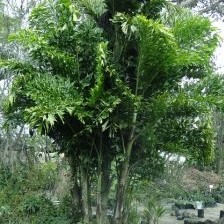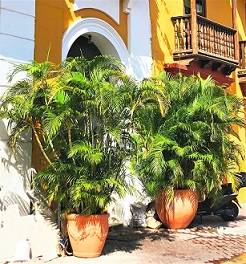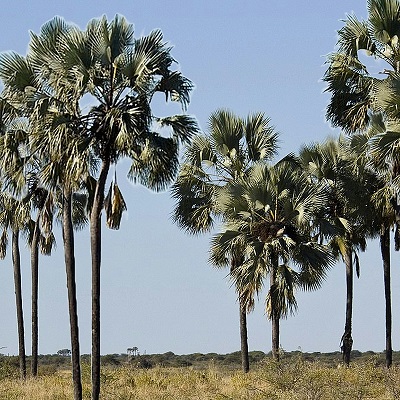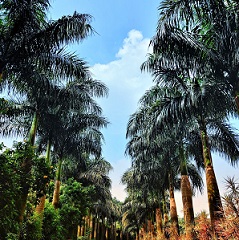Palm Trees
Palm Farm Nursery
Work less, Garden more
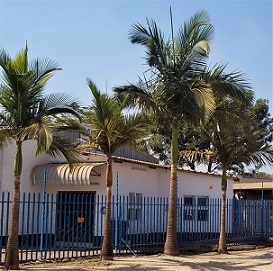
Archontophoenix alexandrae (King Palm)
Tall, single trunk Palm tree, clean appearance, dark green fronds. Extremely durable, thrive in the desert climate. King palms form attractive groups when planted together
Full sun, Average water, drought tolerant
Fast growing, 10 -15 m tall
King palms form attractive groups when planted together
1m to 2m palm
in 40 litre bag
K800
K650
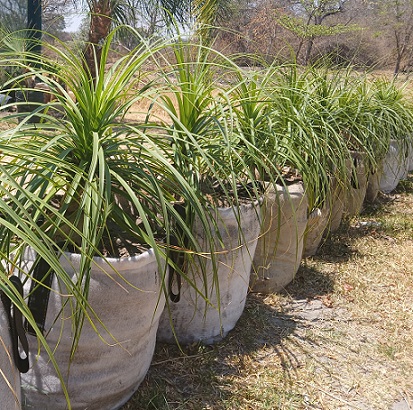
Beaucarnea recurvata (Ponytail Palm)
Full sun to Partial shade, Semi-dry, drought tolerant, Sandy soil, 1m – 2m tall, Requires very little care, Evergreen
50 cm plants
in 60 litre bags
K700
K490
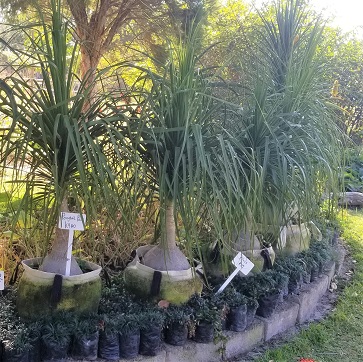
Beaucarnea recurvata (Ponytail Palm)
Full sun to Partial shade, Semi-dry, drought tolerant, Sandy soil, 1m – 2m tall, Requires very little care, Evergreen
Large 1 m to 1.4 m plants
60 litre plant bag
K1,200
K840
Caryota mitis (Clustering Fishtail Palm)
Caryota mitis, commonly known as the clustering fishtail palm, is a striking tropical plant named for its unique, jagged leaflets that resemble a fish’s tail. Native to Southeast Asia, it grows in multi-stemmed clumps, making it ideal for creating lush, green screens or adding a tropical feel to gardens and indoor spaces. It thrives in partial shade to full sun and prefers consistently moist, well-drained soil. This fast-growing palm is popular for its exotic appearance and adaptability.
The clustering fishtail palm (Caryota mitis) prefers a warm, humid environment and grows best in partial shade to full sun. It thrives in well-drained, fertile soil that is kept consistently moist but not waterlogged. Regular watering is essential, especially during dry periods, and occasional feeding with a balanced fertilizer will promote healthy growth. This palm is relatively low-maintenance but should be protected from frost and strong winds. As it naturally forms clumps, older stems may be pruned to maintain shape and encourage new growth.
1m to 2m palm
in 60 litre bag
K700
K490
Dypsis lutescens (Golden Bamboo Palm)
Caryota mitis, commonly known as the clustering fishtail palm, is a striking tropical plant named for its unique, jagged leaflets that resemble a fish’s tail. Native to Southeast Asia, it grows in multi-stemmed clumps, making it ideal for creating lush, green screens or adding a tropical feel to gardens and indoor spaces. It thrives in partial shade to full sun and prefers consistently moist, well-drained soil. This fast-growing palm is popular for its exotic appearance and adaptability.
The clustering fishtail palm (Caryota mitis) prefers a warm, humid environment and grows best in partial shade to full sun. It thrives in well-drained, fertile soil that is kept consistently moist but not waterlogged. Regular watering is essential, especially during dry periods, and occasional feeding with a balanced fertilizer will promote healthy growth. This palm is relatively low-maintenance but should be protected from frost and strong winds. As it naturally forms clumps, older stems may be pruned to maintain shape and encourage new growth.
1m to 2m palm
in 60 litre bag
K800
K560
Hyphaene petersiana (Real Fan Palm or Makalani Palm)
Hyphaene petersiana, the real fan palm, native to the subtropical, low-lying regions of south-central Africa, thrives in open woodlands, flood plains, riverbanks, and the fringes of pans and swamps. It was named after Professor Wilhelm Peters of Berlin, a 19th-century plant collector who conducted work in Mozambique. The palm is highly valued for both its edible and practical uses. The stem pith is edible, and the fruit, beneath its fibrous husk, contains a white core of endosperm known as vegetable ivory. This core is initially soft and edible, with a liquid similar to coconut milk. Children especially enjoy the sweet, gingery flavor of the thin layer of ripe fruit on freshly fallen nuts. Various parts of the palm are used in everyday life—palm fronds are woven into thatch, baskets, hats, fans, and mats, while the central ribs are used in kraal fencing and hut construction. The plant’s fibers are twisted into ropes and strings for musical instruments, and the pulp is traditionally used to treat stomach aches and intestinal worms. Ribs and flower stalks are often used as fuel for cooking. The palm nuts, referred to as “vegetable ivory,” have hard, white kernels that can be carved into buttons and decorative items, popular among tourists.
The real fan palm is a very hardy and easy-to-care-for plant. It thrives in full sun and requires average watering. Although it is drought-tolerant once established, it grows much faster with regular feeding using compost or fertilizer, along with consistent watering—especially during the growing season, which runs from August to April.
50cm to 1m palm
in 60 litre bag
K600
K420
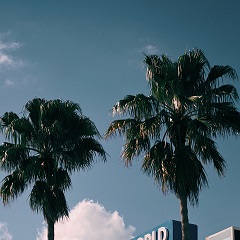
Livistona decipiens (Ribbon Fan Palm)
Full sun, Average water, drought tolerant
Slow growing, More than 10 m tall
50cm to 1m palm
in 60 litre bag
K400
K280
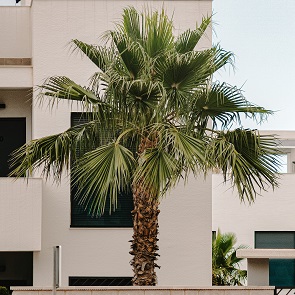
Livistona saribus (Taraw Palm)
Everything about this palm evokes a truly tropical, awe-inspiring environment. Robust, solitary trunk. Makes and excellent indoor container plant. Keep in a bright area near a window
Full sun, partial shade, Average water
Slow growing, 8 to 10 m tall
50cm to 1m palm
in 60 litre bag
K400
K280
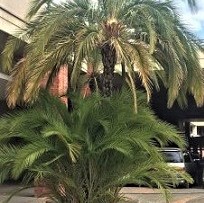
Phoenix reclinata (Wild Date Palm)
Full sun, Water average
Moderate growing speed, 6 to 10 m tall
50cm to 1m palm
in 60 litre bag
K400
K280
Roystonea regia (Cuban Royal Palm)
The Cuban royal palm (Roystonea regia) is a majestic and stately palm known for its tall, smooth trunk, which features a distinctive swollen base that tapers elegantly upward. Topped with a lush crown of long, arching green fronds and a prominent green crownshaft, this palm is native to Cuba and parts of the Caribbean. Often used as a striking centerpiece in large gardens, avenues, and public spaces, it adds a regal tropical presence to any landscape.
The Cuban royal palm (Roystonea regia) thrives in full sun and well-drained, fertile soil. It prefers warm, tropical to subtropical climates and is moderately drought-tolerant once established, though regular watering during dry periods promotes optimal growth. This palm benefits from occasional feeding with a balanced, slow-release fertilizer, especially during the growing season. Good air circulation and ample space are important, as it can grow quite tall and wide. Minimal pruning is needed—only remove dead or damaged fronds. It is relatively low-maintenance and resistant to pests, making it an excellent choice for large landscapes and open spaces.
1m to 2m palm
in 60 litre bag
K800
K650
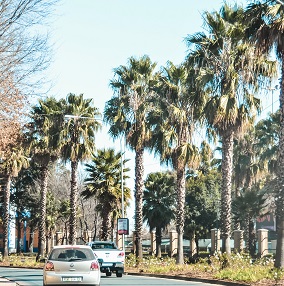
Washingtonia robusta (Mexican Skyduster)
Full sun, Water average to dry
Very Fast growing, 15 – 20 m tall
50cm to 1m palm
in 20 litre bag
K400
K280
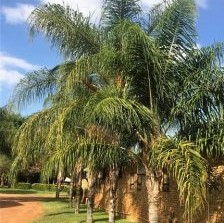
Zyagrus romanzoffiana (Queen Palm)
Feathery bright green leaves, single trunk with a smooth grey bark. One of the most popular palms in tropical and subtropical climates because of its beautiful appearance and low maintenance.
Full sun, Average water
Fast growing, 10 -15 m tall
1.5m to 2.4 m palm in 60 litre bag
K950
K660

